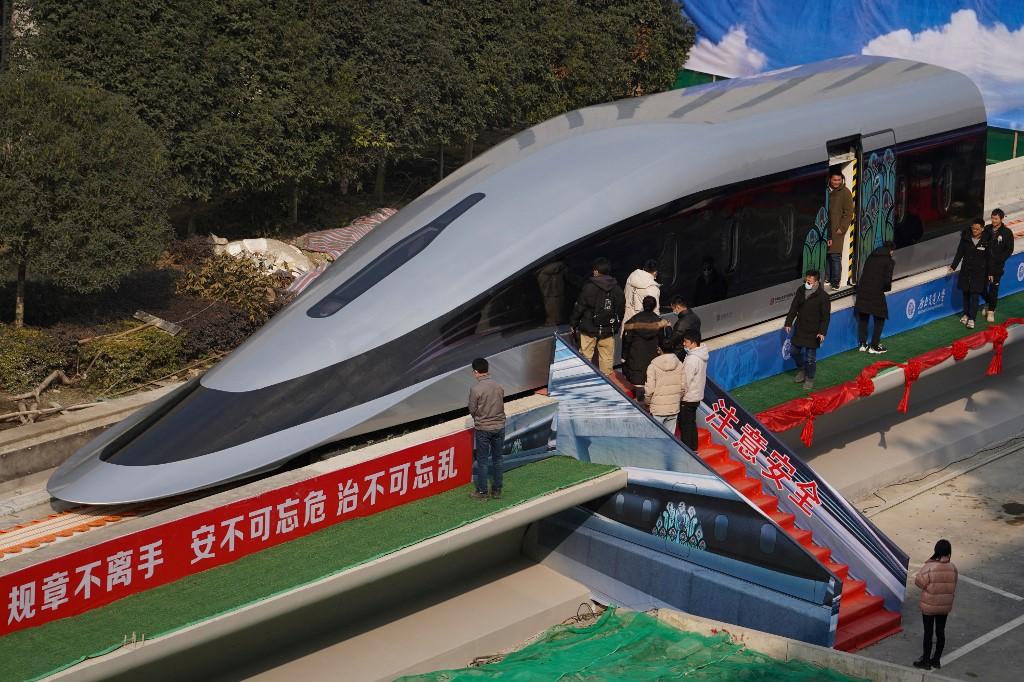China unveils 600kph levitating train, world’s fastest land vehicle
This train would take just two and a half hours to travel from Beijing to Shanghai – a journey that currently takes three hours by plane.
Just In
China unveiled a futuristic “levitating” train on Tuesday that has a top speed of 600kph – making it the fastest land vehicle in the world.
By comparison, Tesla’s Model S Plaid – which the company bills as the fastest production car in the world – tops out at just over 300kph.
The Chinese train uses “maglev” technology, where opposing electromagnetic forces levitate the train above the track and propel it forward. The lack of friction lets the train reach blistering speeds.
China has been testing maglev technology on a limited scale for two decades – there is a short maglev line running from Shanghai to one of its airports – but has not yet constructed long-distance lines that would work with the new train, which state media said is a prototype that will be used for research.
At 600kph, it would take just two and a half hours to travel from Beijing to Shanghai – a journey of more than 1,000km that currently takes three hours by plane.
By comparison, America’s fastest train – Amtrak’s Acela Express from New York City to Washington, DC – tops out at just over 200kph to cover the 370km in three hours. At maglev speeds, that journey would take less than an hour.
Other countries including Japan and Germany are also looking to build maglev networks, but high costs and incompatibility with current track infrastructure remain hurdles.
Elon Musk has pushed the idea of a “hyperloop” that shoots passengers in a pod through an airless tube at up to nearly 1,000kph.
Billionaire Richard Branson tested the concept in a 160kph trial run with two passengers in December, promising that he would one day shuttle passengers from New York City to Washington, DC, in 30 minutes.
SC Maglev, or superconducting magnetic trains, were developed by the Central Japan Railway Company and the Railway Technical Research Institute beginning in the 1970s. Maglev trains work on the principle of magnetic repulsion between the cars and the track. The word maglev is actually a combination of the words “magnetic” and “levitation”.
The first Shinkansen bullet train was built in Japan for the Tokyo Olympics of 1964 and can reach speeds of up to 320kph but it is not a maglev and is susceptible to earthquakes severely reducing its speed.
Subscribe to our newsletter
To be updated with all the latest news and analyses daily.
